by Shen Xiaobo

The gate in front of the Hall of Mental Cultivation (Web pic)
BEIJING, July 27 (Xinhua) -- The former imperial office in the Forbidden City, Yang Xin Dian, is under a major renovation, the first since a century ago, with all its budget covered by social donations, according to Shan Jixiang, curator of the Palace Museum.
The centennial renovation of Yang Xin Dian, or the Hall of Mental Cultivation, is part of the overall maintenance project of the Palace Museum, which is scheduled to finish in 2020, right in time for the Forbidden City's 600th anniversary.
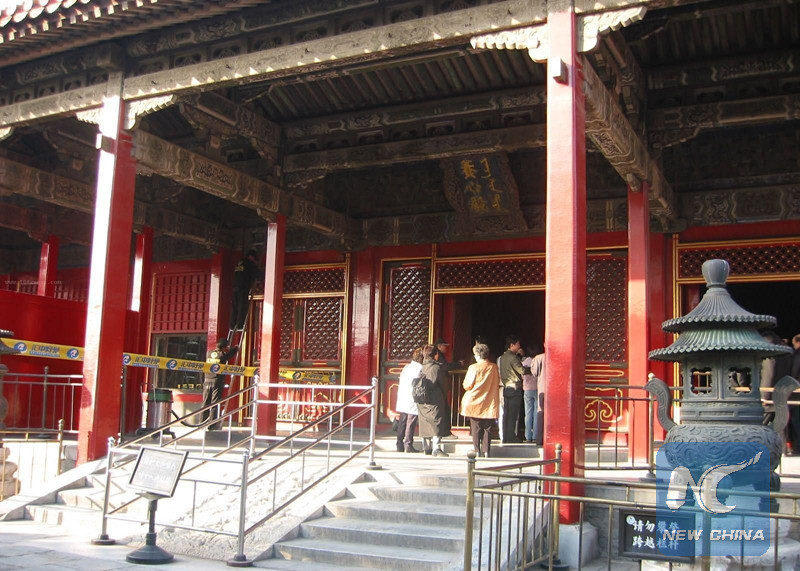
The Hall of Mental Cultivation before its renovation (Web pic)
The hall, where many important decisions were made in the history of China's last dynasty of Qing, is home to about 2,000 precious cultural relics, including royal paintings, calligraphy collections and ancient books, said Shan. "Most of the relics have been in the rooms for centuries, and we are working to move them away for renovation."
First built in 1537, the hall gained the highest political significance when it served as the office and residence of the last eight Qing emperors, who also discussed major issues with their ministers there. In the late 19th century, the building also witnessed the early reign of Empress Dowager Cixi when she made decisions on state affairs in the name of Emperor Tongzhi and Emperor Guangxu from behind a screen.

The eastern chamber of the Hall of Mental Cultivation. The chamber is where Empress Dowager Cixi made decisions on state affairs in the name of Emperor Tongzhi and Emperor Guangxu from behind a screen. (Xinhua file pic)
The renovation is more of a scientific research endeavor than a construction project, said Shan. "The entire course is considered as a detailed research on ancient Chinese royal architecture. Different with the previous renovations, we've established 33 research projects related to the hall.The Palace Museum is exploring new mechanisms to conduct a research oriented renovation."
Shan said the research projects are expected to enrich the museum's experience in the conservation and maintenance of historical relics and, more importantly, to revitalize endangered traditional renovation skills among younger generations.
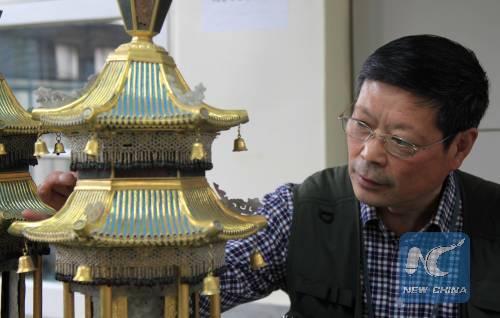
A craftsman is repairing a bronze ware in the Palace Museum. (Xinhua/Zhao Wanwei)
Shan also promised that after the renovation, visitors to Yang Xin Dian will be able to enter the rooms for closer views of the cultural relics. Previously, visitors were only allowed to see the rooms through windows due to the poor condition of the construction.
Social donations
It is estimated that the overall renovation of the Hall of Mental Cultivation would cost a total of 220 million yuan (about 33 million U.S. dollars), forming a financial challenge for the Palace Museum.
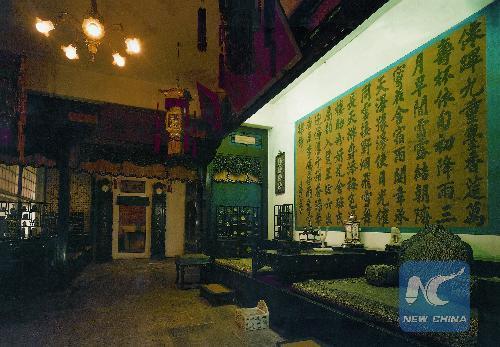
The emperor's bedroom in the Hall of Mental Cultivation (Xinhua file pic)
The renovation project for the hall started at the end of 2015 but was still in need of 80 million yuan. Shimao Group, a real estate developer, last week donated 80 million yuan to the Palace Museum, offsetting the gap. The museum previously had received two other donations, 100 million yuan from Ronnie Chan Chi-chung, chairman of the China Heritage Fund based in Hong Kong, and 40 million yuan from Cui Ruzhuo, contemporary Chinese painting master.
"It is the first time that the Palace Museum has accepted donations from society," Shan told media after the donation ceremony with Shimao Group.
Hui Wing Mau, chairman of Shimao Group, said that he hopes "our donation could raise corporate awareness to contribute to the larger course of the protection of Chinese history and culture."
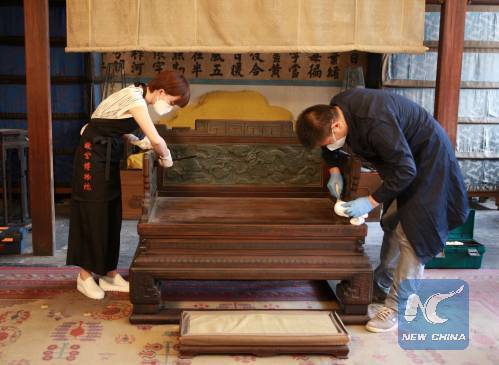
Two workers are cleaning a chair in the Hall of Mental Cultivation before it is moved to another place to make way for the renovation. (Xinhua/Wang Jingqiang)
China has issued a series of policies in recent years encouraging social donations for cultural relics protection.
Shan noted that the ultimate purpose of social fund-raising is to raise the awareness of cultural conservation.
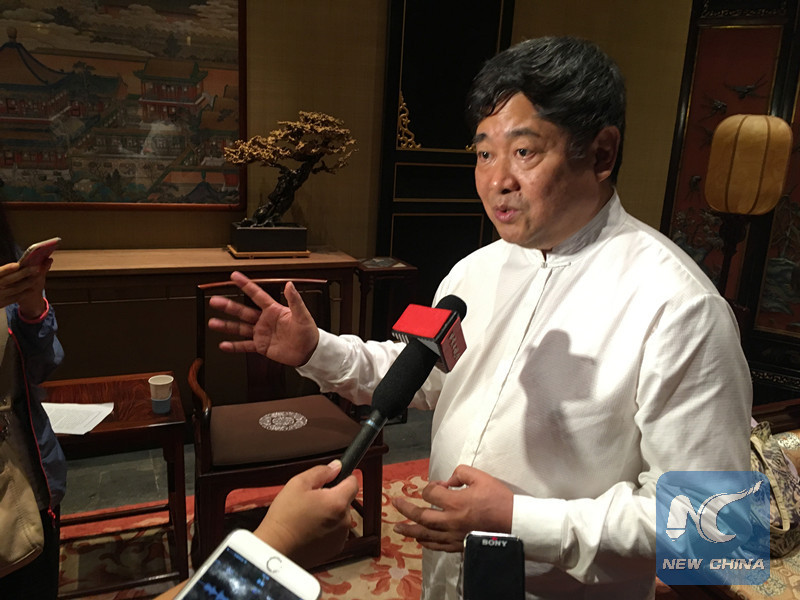
Shan Jixiang, director of the Palace Museum, accepts media interview (Xinhua/Shen Xiaobo)
As a World Cultural Heritage site, the Palace Museum receives an annual allocation of around 100 million yuan from the government, according to Shan. "But by opening the fund-raising channel to society, more people would get to know the status quo of this meaningful project," he said.
All donations are under the operation of the Palace Museum's cultural heritage conservation foundation, according to Shan.

A composite picture of the Palace Museum in the past and current time (Web Pic)

